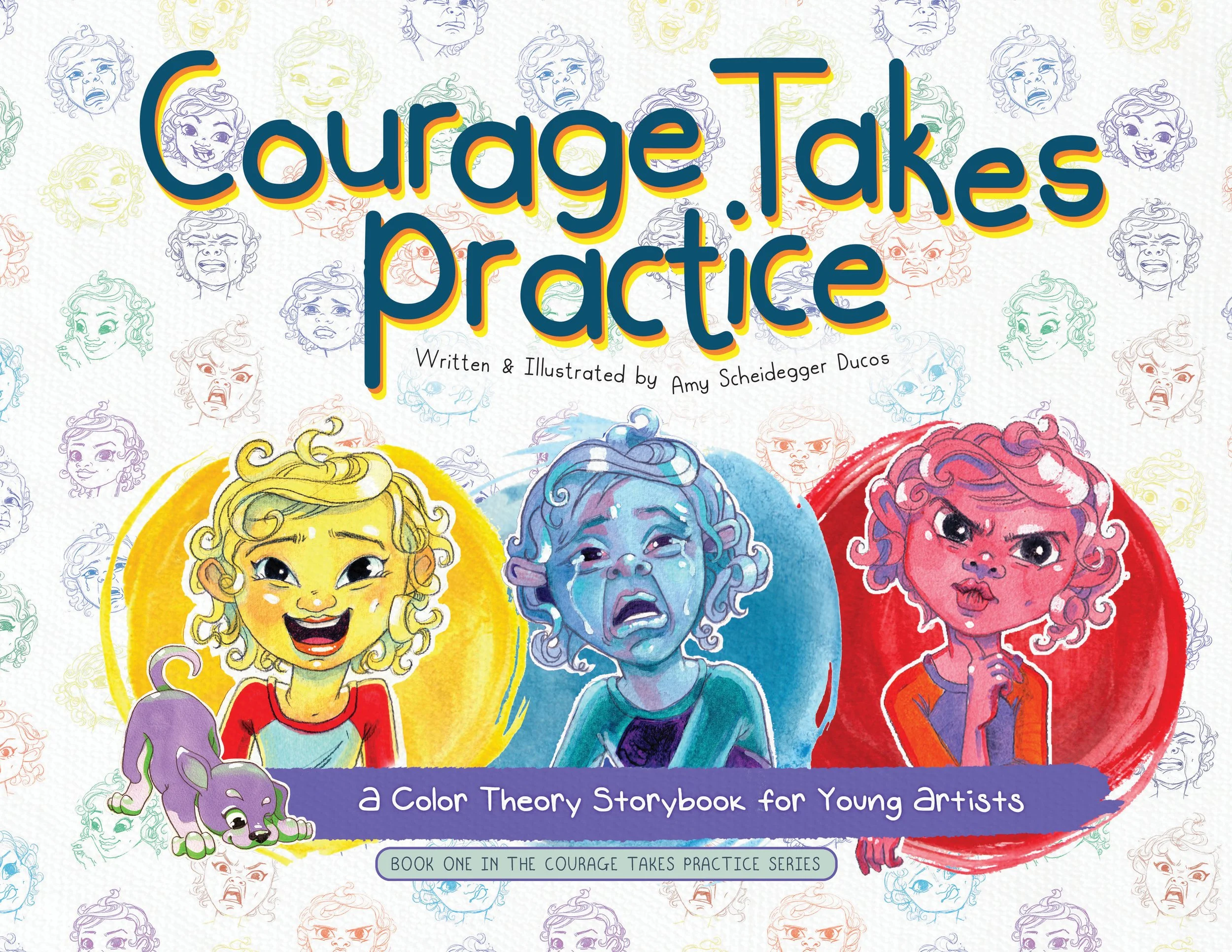Courage Takes Practice: A Colorful, Emotional Journey
I am a life-long artist, artist advocate and current children's book illustrator. For 6 years, I headed an organization called Artistic Rebuttal whose purpose was to convince those in government that the arts were worthy of tax dollars - using the art and voices of children and emerging artistic professionals.
Cover of the Artistic Rebuttal Book Project’s Children's Edition, 2011.
In those six years, I learned that most children participate in art making without being taught - showing us that creating is an integral part of humanhood and acts as a method to learn and imitate our surroundings. A toddler’s ability to recognize differences in colors and shapes is foundational and could mean the difference between safety or harm. For example, a child quickly learns to make associations with certain colors—red is “hot,” and blue is “cold.” By four, a pint-sized artist starts creating visuals that imitate their surroundings. By five there begins a systematic representation of figures and objects and an acknowledgement of space and composition. By six, art making becomes as much about communication, visual imitation, self-expression and a symbolic control of reality as creating a pretty picture. Not only is art a fun kind of communication for a child, but because children also feel fear and rage they use art as a means of coping. Once they create an image of the person or thing that they fear, they have named the feeling and reduced its threatening power.
Here is where Color Theory comes in - the psychology of using color to convey the emotions artists want their viewers to feel. For a young artist, this means knowing the way our brains work when presented with certain colors. For example, using yellow denotes happiness or joy because it’s bright like the sun while blue conveys loneliness or sadness because it’s usually associated with rainy days. Young artists would benefit from learning color theory so that they can better communicate their own feelings in a way others can understand, even subconsciously.
Beyond learning color theory to evolve their own art…colors affect a child’s emotions, their ability to focus, and even their educational growth. The colors we surround ourselves with have a profound impact on our emotions, our energy, even our productivity. Monotone environments may induce more feelings of fear, restlessness, and difficulty concentrating because a minimal range of colors can under-stimulate. Young children find contrast and brighter colors just the right amount of stimulating, mainly because their sight doesn’t allow them to see subtle changes in color yet, while older children prefer cooler or more subdued hues, which can result in a better ability to focus on more complex things.
In 2017 when I started writing my children’s book about artistic exploitation / bullying to tell the story of my childhood, I knew I wanted to illustrate it with color theory at its center.
In the book we follow Olivia, a new kid from Ecuador relocated to a small North Carolina town, on a color journey where the entire scene is flooded with the color associated with the most dominant emotion she is experiencing. The story shifts from blue to yellow to green to orange to red and back again as Olivia experiences sadness, hope, happiness, cautiousness, anger, creativity, introspection, and acceptance - all emotions that have an associated color.
Scattered throughout the book are color idioms commonly used in the English language, such as “tickled pink,” “golden opportunity” and “seeing red.” Using idioms in the book felt like a no-brainer since some color associations are so ingrained in the English language that we no longer question that “seeing red” means feeling intense anger.
Three challenges emerged when writing a color theory story so deeply rooted in 21st century American culture and the English language…
First - When translating the book into Spanish, a massive rewrite was needed to incorporate Spanish idioms instead of English ones since they would make no sense to native Spanish speakers. Spanish uses idioms such as: “Pasar la noche en blanco / spend a night in white” means “have a sleepless night.” “Comerse el marrón / To take the blame” literally means to “eat the brown.” And my favorite, “Media naranja / Soulmate or better half” meaning “half orange.”
Second - colors are associated with vastly different concepts in eastern cultures than western. For example, white in western culture symbolizes purity and innocence while in the east, white is viewed as the color of death. White is worn to depict grief and misfortune. White is just the tip of the iceberg when it comes to how color symbolism varies from country to country.
Third - the meanings of colors are ever changing. For example, pink, which is now widely associated with baby girls and femininity, in the 18th century pink was little boys, says Leatrice Eiseman, a color expert and executive director of the Pantone Color Institute. “It was related to the color of red, which was passionate and aggressive. Even though you reduce the shade level, it was a color that was associated with boys,” Eiseman said.1
For kids who read this book, those cultural disclaimers have been added to supplemental material, like color theory posters and a coloring book*, in order to give them a peek into the color theory of other times and cultures.
*Courage Takes Practice color theory posters and coloring book will be released in the near future
1”The Complicated Gender History of Pink” by Puja Bhattacharjee, CNN Animation by Giant Ant


